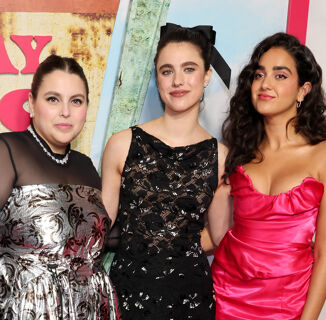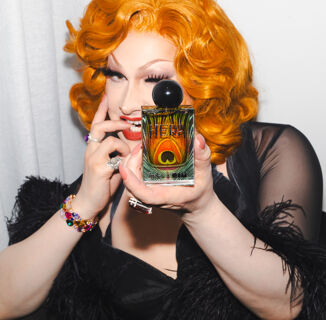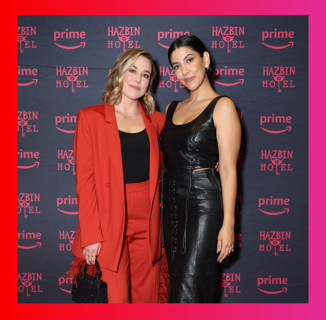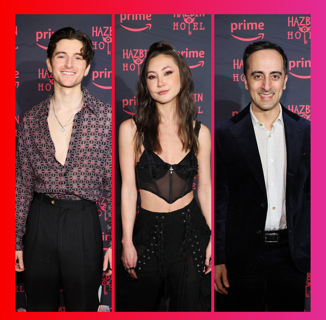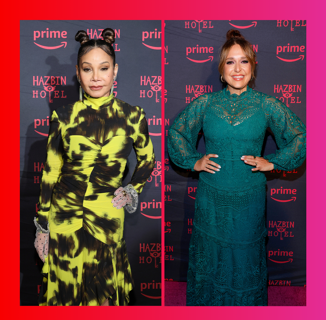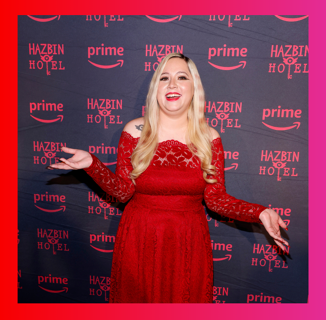Searching for a job is a job in its own right and when you’re part of the LGBTQ+ community, finding a space that celebrates your identity, and the intersections that they exist at, can feel even more daunting. Even LinkedIn’s 2024 Out @ Work Guide highlights the roadblocks that many queer people face. That’s where Andrew McCaskill comes in.
As a LinkedIn Career & Global Communications expert, McCaskill knows a thing or two about traversing through the world of work. He led communications for Nielsen China and served as Nielsen’s global executive sponsor for their LGBTQ+ employee resource group. And prior to joining LinkedIn he led diversity & inclusion strategy global sales, marketing & public affairs at Facebook.
Not to mention, his monthly newsletter, The Black Guy in Marketing, offers career resources to the LGBTQ+ community, women, and people of color to help them successfully navigate work and beyond. The Mississippi native has been named on PR Week’s “Top 40 Under 40 PR Executives” and hailed a diversity champion by Fortune Magazine. He has also educated the masses with his cultural commentary featured in The New York Times, USA Today, Forbes, Fortune, AdWeek, as well on BET and SiriusXM.
INTO chatted with McCaskill to get the tea on how LGBTQ+ folks can advance in their fields without losing their authenticity and why community is one of our biggest assets in the world of work.
Culture, unfiltered
Twice a week, our newsletter will bring you the pulse of queer culture, from the tastemakers to the groundbreakers.
Related:
What Equal Space founder Citi Medina wants you to know about supporting LGBTQ+ employees
In a world that often denies opportunities to founders of color, we say “yes,” affirming their potential and providing programs designed to foster growth.
Andrew, you have plenty of experience when it pertains to supporting LGBTQ+ people in the world of work. What were some of the most surprising data points you saw from the research?
One of the most surprising things that I saw in the data was that, despite some of the incredible gains that we’ve seen, queer folks at work still feel unsafe. They’re not 100% sure that they can be who they authentically are and still thrive. I think that a lot of us will sometimes look at this through the lens of our own lived experience.
And it’s really easy to think about the LGBTQ+ experience at work through the lens of folks like you and I who’ve lived in New York, or who work in the tech industry in San Francisco or Los Angeles. There’s a whole lot of LGBTQ+ folks who are not living in major metropolitan areas and nearly 60% of LGBTQ+ professionals feel like they have to change their style or appearance to fit in at work. Two out of three believe that hiding their identity helps them advance in their career.
[That] just really landed on me because I think about the fact that my Black gay out experience in Harlem, might be quite different from what my experience would be in Hattiesburg, Mississippi, or Jacksonville, Florida, or St. Louis, Missouri even. I think that that’s where we’ve got to continue to see the totality of our community and celebrate the highlights and people who are thriving. But also be really mindful that our experience can be vastly different based on location, socioeconomic status, race, and gender as well.
What do you think are some best practices or tips that LGBTQ+ folks can use to build up their presence on social media, specifically LinkedIn, or put their best foot forward with networking without sacrificing their authenticity.
So I thought a lot about this as a LinkedIn career expert, but I thought even more about it as a Black gay man, right. I want people to be out, proud, and paid. I’m not going to give folks advice on just how to survive it at work, because we’re beyond that. We’re out here trying to thrive at work just like everybody else. We are just as ambitious as our non-Hispanic white counterparts. We are just as ambitious as our cisgender heterosexual counterparts.
And so the things that I think are our greatest assets in thriving at work is number one, leveraging technology to the hilt. Technology has helped to democratize visibility, democratize access, democratize opportunity and democratize that access to information. So if you are in Jacksonville, Florida, you can use some of the exact same tools that people are using in Manhattan to be visible, to get access to opportunity, and to get access to information, because information is currency.
One of the things that I tell folks is that “you cannot control how these companies or your co workers treat you, but what you can control is the agency and options in your career.” And one of the best ways to do that is on LinkedIn. For instance, building out a profile on LinkedIn, we have a tool that will let you search for roles and opportunities based on companies that have committed to inclusion. You can search for companies that match your values, which I think is a great gateway to find spaces that are queer-friendly and queer-safer.
The other thing that I think is really important is, oftentimes, it’s so much easier to seek to chart a path towards success, if you can see other successful queer people who are thriving in their roles and in their jobs and follow their paths, or at least follow their blueprint or their progression, or even figure out ways to have conversations with them to find out what their wins and losses were. And one great way to do that on our platform is “Voices to Follow.” We have those be to LGBTQ+ Voices to Follow. There are people who are very open about their career journey and they’ve been thriving in their industries. We celebrate those LGBTQ+ Voices to Follow all year round, not just during Pride.
I think the other thing that I think is so helpful to queer people, to folks like me in my career, has been community. We call it networking. We have to build a professional community, people who are rooting for us to win. If you are in Jacksonville, Florida, you can absolutely start to build a network on our platform that’s inclusive of people in L.A., San Francisco, Atlanta, Miami, New York, and start to build your network so that more people know who you are, what your skills are, and how to engage you. We do it in our social media lives. We’ve got to take that same rigor that we [have] in building our social media lives and do it in our professional network lives. And you can do that strategically on LinkedIn.
How can LGBTQ+ people find out if an organization is a good fit for them?
46% of LGBTQ+ professionals said “they would feel more comfortable showing their true self at work if they had more diverse leaders in their workspace.” I always tell LGBTQ+ folks to have a couple of questions in the interview process where you’re interviewing the recruiter as well. And some of those questions are things like do you have employee resource groups?
One of the hardest things for me, when I was in the job market a few years ago, I wanted to go to a company that I knew my medical coverage would cover not only prep, but covered most of the testing for PrEP as well. At that time, PrEP was not as pervasive as it is now. And I was like, “No, I’m going to ask this recruiter.” This turned into a conversation about what I do in my non-work life.
I’m going to interview these companies to get the best level of information so I can make a good decision about where I go. What are their employee resource groups? You know, it can even be like, what’s your commitment to diversity? What’s the diversity at the leadership level, right? Having those conversations with recruiters or hiring managers about what that looks like, they may say, “Oh, well, 50% of our leadership is women.” It’s an easy follow up, if you’ve rehearsed it, and you prepare for it to say, “Well, I’m curious about people of color or people from the queer community.” Sometimes just those questions give you real insight.
The other thing, I think in terms of when you’re looking at companies and doing your research, do the recruiters or hiring managers have their pronouns on their LinkedIn platforms? Over 25 million people have added their pronouns to their LinkedIn profiles. I feel like that’s also a good indicator that they’re at least mindful of the fact that everybody does not have the same gender identity journey. Tips like that are really helpful for LGBTQ+ folks to start to get signs as to whether or not an organization is going to be a safer place for them, a place where they can potentially have the greatest opportunity to be authentic, and not just survive, but thrive.
Lastly, what do you think that LGBTQ+ people can do to protect themselves while navigating a system that, from the outside, seems like it’s dialing back its efforts to create and cultivate an inclusive and equitable environment?
Everybody is not going to land in a safe space. There’s some of us who have to sort of grow where replanted until we can find a better space. I think the thing that I would say to people is to figure out how to get the support you need at work or you don’t see, or you don’t see the opportunity to grow at work, start to put together a plan, a great plan is is better is 1000 times better than a than a coping mechanism, right, could start to
Begin to put together your team and put together your plan on how to get from where you are right now, into a space where you can be more authentic and where you can thrive and grow. Those spaces exist, regardless of whatever the headwinds are. We just have to be extra strategic to find those spaces and make sure that those spaces stay there. We can’t take our foot off the gas as a collective and a community.
But we also cannot be disillusioned about our self-preservation. The last thing that the [referee] says to two fighters in the ring, before they ring that bell, is “protect yourself at all times.” And what I say that to us, as queer people navigating the world of work, which we already know is inequitable as it stands, is “we have to protect ourselves at all times, protect our peace, protect our safety, protect ourselves, protect each other, and then protect our future in the fact that we are looking forward and not looking backwards in terms of our careers.” That means putting together that plan to go the next level, but also reaching out to other people who may have been able to do something that you’ve not been able to do that can help you with that.
Also giving back to other people that are looking for an example that maybe you can give. Share your wins, but also share your losses with those people. So many of the mistakes that I made, I know that I have made [them] because I am willing to tell somebody else about my mistake and not hide it so that they don’t have to make that same mistake, too. I don’t know if this is appropriate for the article, but I will say this is that as a Black gay man, I have always felt like the calvary is not coming for me. And that means that I’m going to have to figure this out and save myself. So if they strip every program away, if budgets are cut for something, I still have an amazing asset and that asset is me.
Related:
Jodyann Morgan and CTOAN Co Deliver Joy to Black, Fat, Queer People, One Candle at a Time
“I never imagined that my little hobby would bring so much light and joy into the world, but I’m so grateful to be the catalyst for it.”
Don't forget to share:
Help make sure LGBTQ+ stories are being told...
We can't rely on mainstream media to tell our stories. That's why we don't lock our articles behind a paywall. Will you support our mission with a contribution today?
Cancel anytime · Proudly LGBTQ+ owned and operated
Read More in The INTO Interview
The Latest on INTO
Subscribe to get a twice-weekly dose of queer news, updates, and insights from the INTO team.
in Your Inbox




